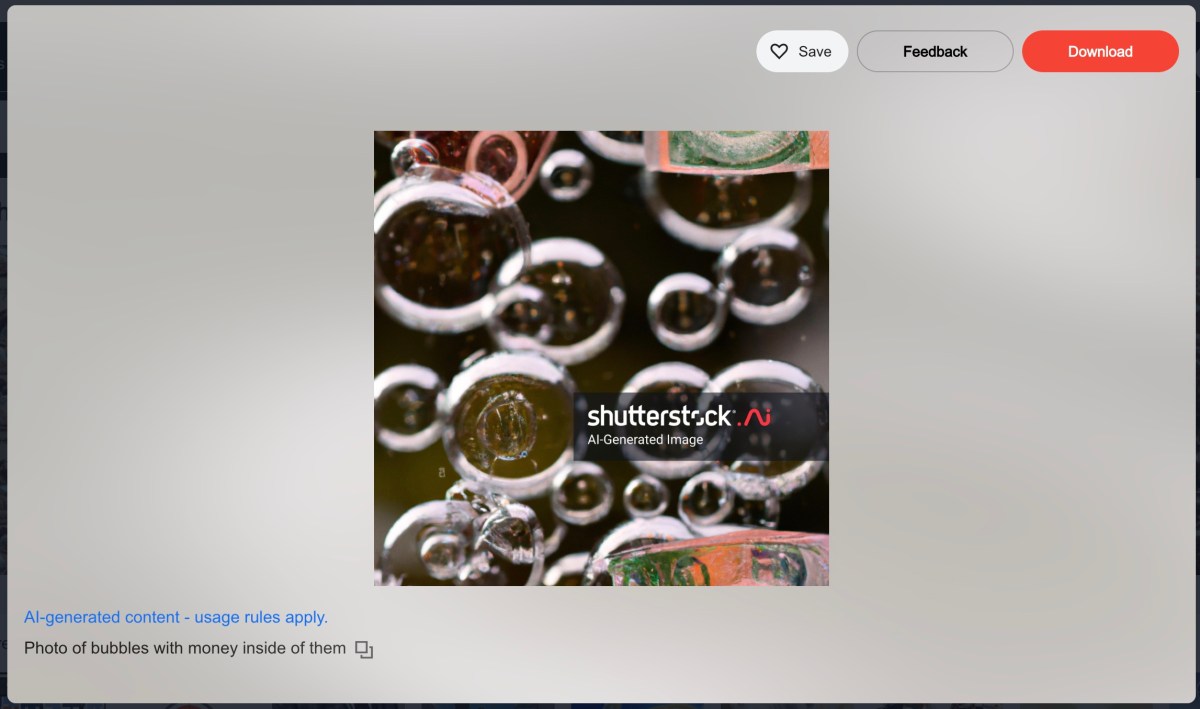Hey there! If you’ve ever browsed stock photo websites, you probably noticed an explosion of images—some looking super realistic, others a bit… unusual. Shutterstock is one of the biggest platforms out there, offering millions of images for all kinds of projects. Recently, a new wave of images created by AI has started popping up, transforming the way we think about stock photography. These AI-generated images are changing the game, making it easier and faster to find unique visuals. But just how many of these AI-made images are out there on Shutterstock? Let’s dive into what’s happening behind the scenes!
What Are AI-Generated Stock Photos?

So, what exactly are AI-generated stock photos? In simple terms, these are images created entirely by artificial intelligence algorithms, rather than taken by photographers or created manually by artists. Think of it like giving a computer a set of instructions—called prompts—and having it generate an image based on that input. These images can range from hyper-realistic portraits to surreal landscapes, all crafted by sophisticated AI models like DALL·E, Midjourney, or Stable Diffusion.
Why are they gaining popularity? Well, they offer some pretty cool advantages:
- Speed: AI can generate images in just seconds or minutes, saving time compared to traditional photoshoots.
- Cost-effective: No need to hire models, photographers, or set up elaborate shoots—just type in a prompt and get your image.
- Uniqueness: AI can produce one-of-a-kind visuals that might be hard to find or create otherwise.
- Customization: You can tweak prompts to get exactly the style, mood, or elements you want in an image.
But it’s not all perfect—some folks worry about the quality, ethical considerations, and copyright issues surrounding AI-generated images. Nonetheless, these images are making a big splash in the stock photo world, especially on platforms like Shutterstock, where the demand for fresh, diverse visuals is always high.
In the next sections, we’ll explore how many AI-generated stock photos are available on Shutterstock, how they’re being used, and what this means for creators and consumers alike. Stay tuned!
How to Identify AI-Generated Images on Shutterstock

As AI-generated images become more common on platforms like Shutterstock, it’s useful to know how to spot them. While these images can look incredibly realistic, there are often subtle clues that can help you differentiate between human-created photos and those generated by AI.
Here are some tips to identify AI-generated images:
- Look for weird or unnatural details: AI images sometimes have odd artifacts, such as inconsistencies in backgrounds, unnatural textures, or distorted facial features. For example, you might notice eyes that seem mismatched or backgrounds that don’t quite align.
- Check for blurry or inconsistent edges: When AI creates images, sometimes the edges of objects or subjects are slightly blurry or have strange halos. If parts of the image seem unusually smooth or overly sharp without a clear reason, it might be AI-generated.
- Examine the lighting and shadows: Shadows and lighting are tricky for AI. If the shadows don’t match the light source or look oddly placed, that’s a sign the image might be synthetic.
- Inspect textures and details: AI images can sometimes have overly uniform textures or repetitive patterns. For example, skin might appear unnaturally smooth, or foliage might look too perfect and repetitive.
- Use reverse image search or AI detection tools: There are online tools designed to analyze images and assess whether they’re AI-generated. Running an image through these can give you additional clues.
While these tips can help, it’s important to remember that AI technology is rapidly improving. Some AI-generated images are now extremely realistic, making them tougher to identify. As a user or buyer, staying vigilant and combining visual checks with available tools is your best approach.
The Impact of AI-Generated Images on Stock Photography
The rise of AI-generated images is reshaping the world of stock photography in many ways. It’s an exciting development, but it also brings some challenges and considerations for creators, buyers, and platforms like Shutterstock.
Here’s a quick look at how AI-generated images are influencing the stock photography industry:
Advantages:
- Faster content creation: AI can generate a wide variety of images quickly, reducing the time needed to produce specific visual content.
- Cost-effective solutions: For businesses or creators on a budget, AI images can be a more affordable alternative to photoshoots or hiring models.
- Increased diversity and customization: AI allows for easy creation of images depicting diverse scenarios, cultures, and concepts that might be hard to find or photograph in real life.
Challenges and Concerns:
- Authenticity and originality: With AI-generated images flooding the market, questions about originality and authenticity are more relevant than ever. Buyers need to be sure about the provenance of images they purchase.
- Impact on photographers: Traditional photographers and artists may feel threatened by the ease and speed of AI image generation, which could influence their livelihood.
- Legal and ethical issues: Copyright, attribution, and ethical use of AI-generated images are still evolving topics. Clear guidelines are needed to navigate these waters.
Overall, AI-generated images are a double-edged sword. They open up exciting possibilities for creativity and efficiency but also raise questions about the future of original content. Platforms like Shutterstock are actively exploring policies to manage AI content responsibly, ensuring that buyers and creators can navigate this new landscape confidently.
In the end, understanding the impact of AI on stock photography helps us appreciate both the opportunities and the challenges ahead. As users, staying informed and adaptable will be key to making the most of these technological advances.
Current Statistics on AI-Generated Stock Photos on Shutterstock
So, you’re curious about just how prevalent AI-generated stock photos are on Shutterstock? Well, the landscape is evolving rapidly, and the numbers are pretty fascinating. As of now, Shutterstock has seen a significant uptick in the availability and use of AI-created images. While exact figures can be a bit tricky to pin down, recent reports suggest that around 10-15% of new stock images uploaded are generated or enhanced using AI tools.
What does this mean in practical terms? For starters, the variety and volume of AI-generated photos are growing fast. Shutterstock’s data indicates that the number of AI-assisted uploads has doubled in the past year alone. This growth isn’t just in quantity; the diversity of images is also expanding. From abstract backgrounds and conceptual art to realistic portraits and product photos, AI tools are helping creators produce a wide array of visuals efficiently.
Here are some quick stats to give you a clearer picture:
- Number of AI-Generated Images: Estimated thousands of new AI-created images uploaded monthly.
- Contributor Activity: A growing number of photographers and designers are experimenting with AI tools, with some dedicating entire portfolios to AI-generated content.
- Customer Demand: Searches for AI-generated images have increased by over 20% in the past six months, indicating a rising interest among buyers.
It’s also worth noting that Shutterstock has started to implement policies and tagging systems to clearly identify AI-generated images, helping buyers and creators distinguish between human-made and AI-assisted content. This transparency is crucial as the industry navigates questions about authenticity and originality.
All in all, the current statistics show that AI-generated stock photos are not just a fleeting trend—they’re becoming a substantial part of the stock photography ecosystem. As technology advances, we can expect these numbers to grow exponentially, reshaping how visual content is created and consumed.
Future Trends and Developments in AI-Generated Stock Photography
Looking ahead, the future of AI-generated stock photography is full of exciting possibilities. Technology is moving so fast that what seems cutting-edge today might be standard tomorrow. Here are some key trends and developments to keep an eye on:
1. Hyper-Realistic and Customizable Images
AI tools are becoming better at creating hyper-realistic images that are virtually indistinguishable from real photos. We’ll see more customizable options, where users can tweak details—like lighting, mood, or even specific objects—to generate images perfectly suited for their needs. Imagine requesting a photo of a “cozy coffee shop at sunset” and getting exactly that, tailored to your specifications.
2. Increased Ethical and Legal Frameworks
As AI-generated images become more common, industry leaders and policymakers are working on clear guidelines. Expect to see developments around licensing, attribution, and ethical use. For example, some platforms might require disclosure if an image is AI-created, fostering transparency and trust.
3. Integration with Other Creative Tools
AI-generated stock photos will likely integrate seamlessly with design software like Photoshop, Canva, or Figma. This will allow creators to incorporate AI images directly into their workflows, making the process faster and more intuitive. Think of AI as your creative assistant that’s always ready to help bring your ideas to life.
4. Democratization of Content Creation
AI tools are lowering barriers to entry for aspiring photographers and designers. Even those with limited technical skills can generate professional-quality images effortlessly. This democratization means more diverse voices and perspectives will be reflected in stock imagery, enriching the content available on platforms like Shutterstock.
5. Ethical AI and Bias Reduction
Future developments will also focus on making AI more ethical—reducing biases, ensuring diversity, and maintaining respectful representations. As AI learns from vast datasets, efforts will be made to prevent stereotypes and promote inclusivity in generated images.
In summary, the future of AI-generated stock photography is bright and full of potential. It will enhance creativity, improve accessibility, and introduce new standards of quality and transparency. Whether you’re a creator or a consumer of stock images, staying informed about these trends will help you leverage this technology to its fullest.
Conclusion and Final Thoughts
As the landscape of stock photography continues to evolve, AI-generated images are becoming an increasingly prominent component of platforms like Shutterstock. These images offer numerous advantages, including rapid creation, cost-effectiveness, and the ability to produce highly customized visuals that meet specific needs. However, they also raise important questions regarding authenticity, copyright, and the impact on traditional photographers.
Currently, Shutterstock has integrated AI-generated stock photos into its collection, providing users with a diverse array of options. The number of these images is steadily growing, reflecting the rapid advancements in AI technology and the increasing acceptance of AI art in commercial use. While precise figures fluctuate, industry estimates suggest that AI-generated images now constitute a significant portion of new uploads, especially in categories like abstract art, conceptual visuals, and background images.
For content creators and businesses, understanding the availability and characteristics of AI-generated stock photos is essential for making informed choices. When selecting images, consider factors such as:
- Authenticity: Does the image need to convey a real-world scene or concept?
- Customization: How easily can the image be tailored to your branding?
- Copyright and Licensing: Are there clear rights and usage terms for AI-generated images?
In conclusion, AI-generated stock photos are reshaping the visual content landscape. Staying informed about their growth and characteristics will help users leverage these resources effectively while navigating the ethical and legal considerations they entail.

